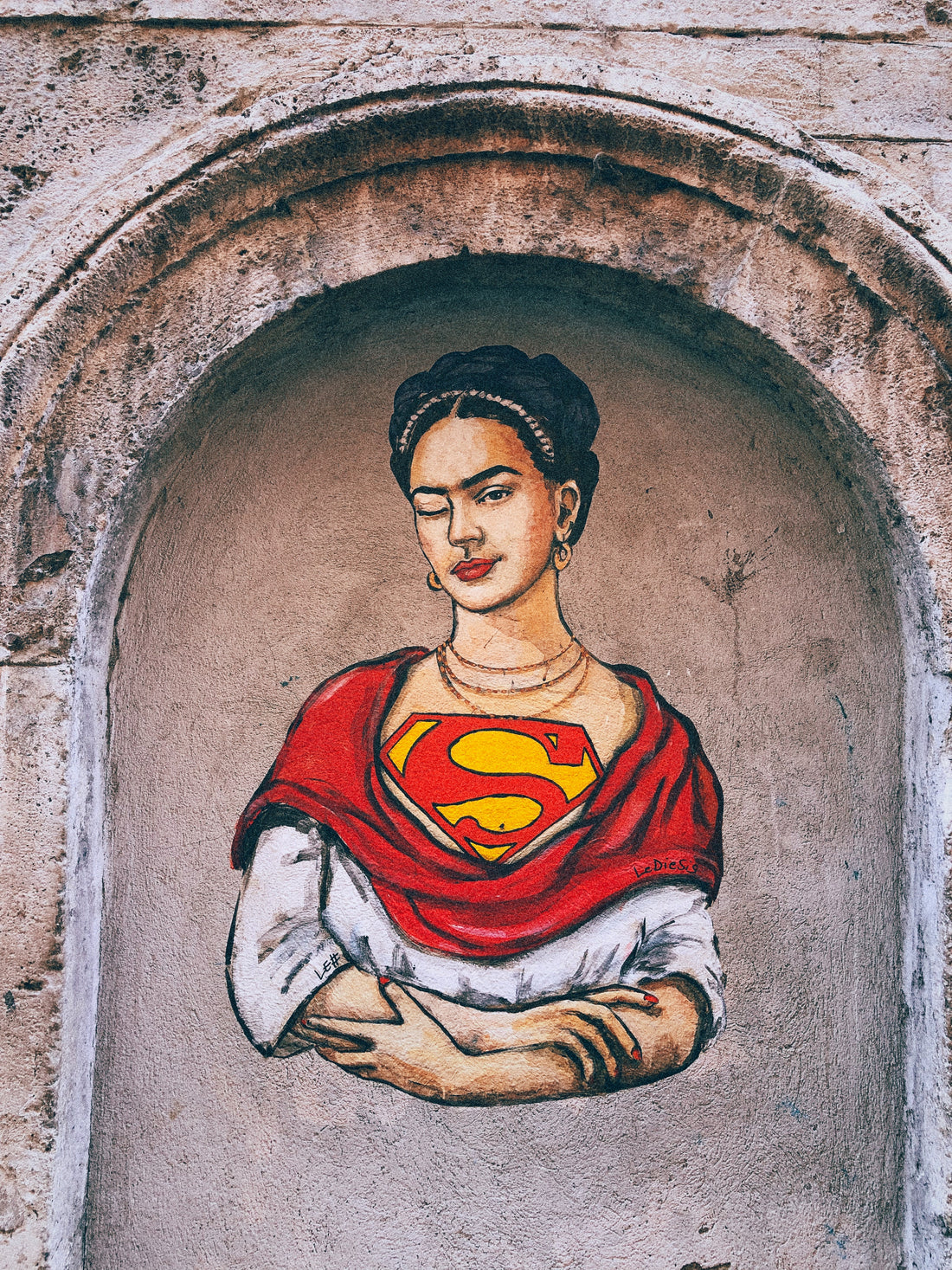By Julie R Butler
Today, the world knows Mexican painter Frida Kahlo as a pop culture icon whose distinctive portraits appear on everything from clothing and jewelry to handbags and shopping bags, from indoor decor and wall posters to outdoor graffiti and murals. But she wasn’t very famous during her own lifetime. So how did the woman who was once best known for being married to muralist Diego Rivera become the internationally recognized woman known for her prominent unibrow along with her thick braids piled atop her head, often decorated with flowers?

Frida Kahlo’s Charismatic Character
It was the 2002 movie Frida, starring Salma Hayek and Alfred Molina, that brought international stardom to Magdalena Carmen Frida Kahlo y Calderón, as it introduced people unfamiliar with Mexican culture to the passion, pain, and sheer force of character that drove the extraordinary life of this colorful character.
And it wasn’t just that Frida loved to dress flamboyantly. As the film shows, despite her small, delicate-looking frame, Frida had an outsized personality that allowed her to overcome serious physical disabilities caused by polio and a tragic trolley accident as well as other traumas ranging from her philandering husband to a series of miscarriages that left her emotionally devastated.
Frida Kahlo as a Feminist Icon
There was another important element of Frida Kahlo’s life besides her strong personality that allowed her to persevere, despite all those setbacks.
Long before the slogan “Nevertheless, she persisted” became a motto for women who are breaking down the barriers to equality in society, Frida Kahlo persisted by channeling her pain into her artwork. It was unique, groundbreaking work that revelled in la chingada. And the fact that she created raw, honest self-portraits depicting women’s real experiences rather than just trying to capture the ideal of feminine beauty is one of the main reasons Frida is considered a feminist icon.

Frida Kahlo Celebrating Mexicanidad
Although it would take half a century after her death in 1954 for the wife of Mexico’s most famous muralist to become a symbol throughout the world of individuality, innovation, inner strength, and insistence on living life to the fullest, within Mexico, Frida Kahlo had reached the status of a cultural icon by the 1980s. And it had a lot to do with her devotion to Mexican folk culture and mexicanidad.

At a time when being “civilized” in Mexico meant adopting European standards, Frida was part of a movement to change this attitude by celebrating indigenous traditions and Chicano pride. This impulse is expressed in her artwork, which often involves pre-Columbian themes and stylistic elements like lack of perspective. But what she is most famous for is her compelling self-portraits, which often depict her wearing her customary traditional Mexican huipiles and long, embroidered skirts, abundant jewelry, and her now-famous braided hair with flowers.

This favorite among many insightful Frida Kahlo quotes highlights the way so many Mexicans love and appreciate their native country: “México está como siempre, desorganizado y dado al diablo, sólo le queda la inmensa belleza de la tierra y de los indios.”
Don't forget to check out some of the articles in Shoptezuma that celebrate Frida's life:





